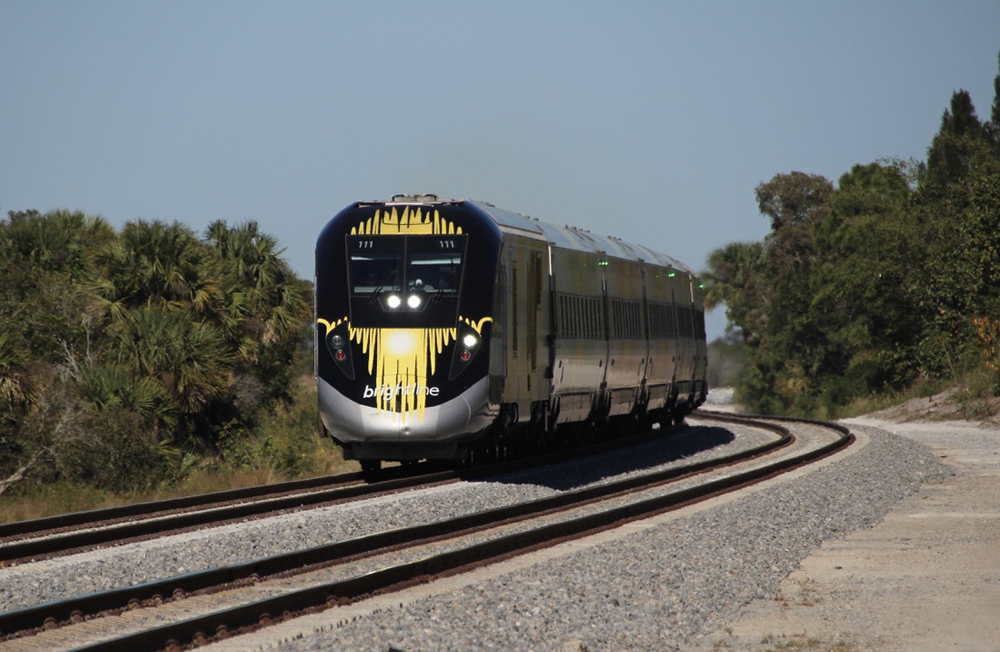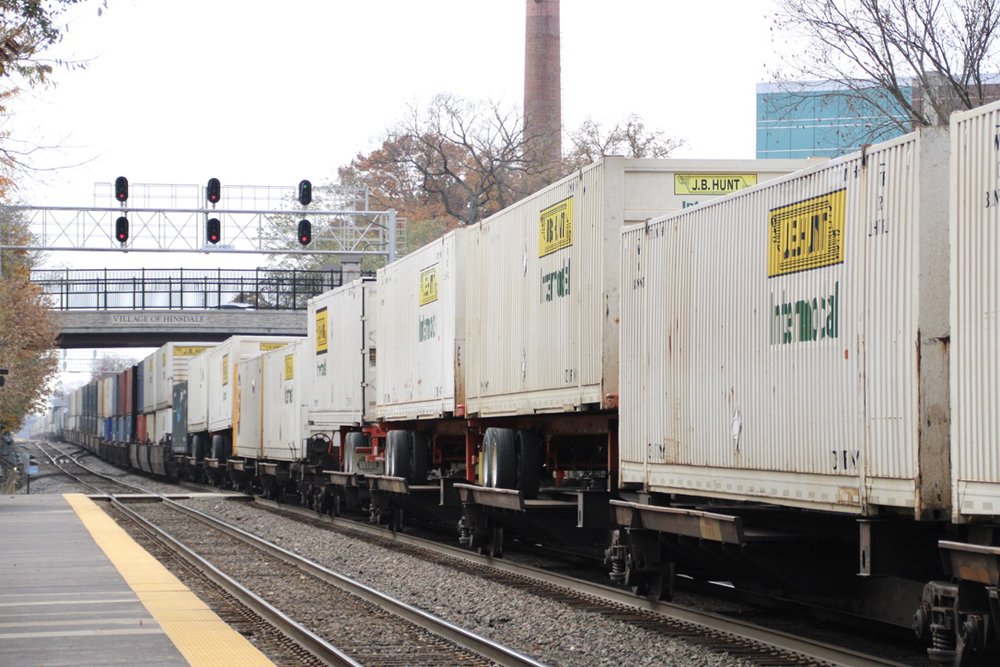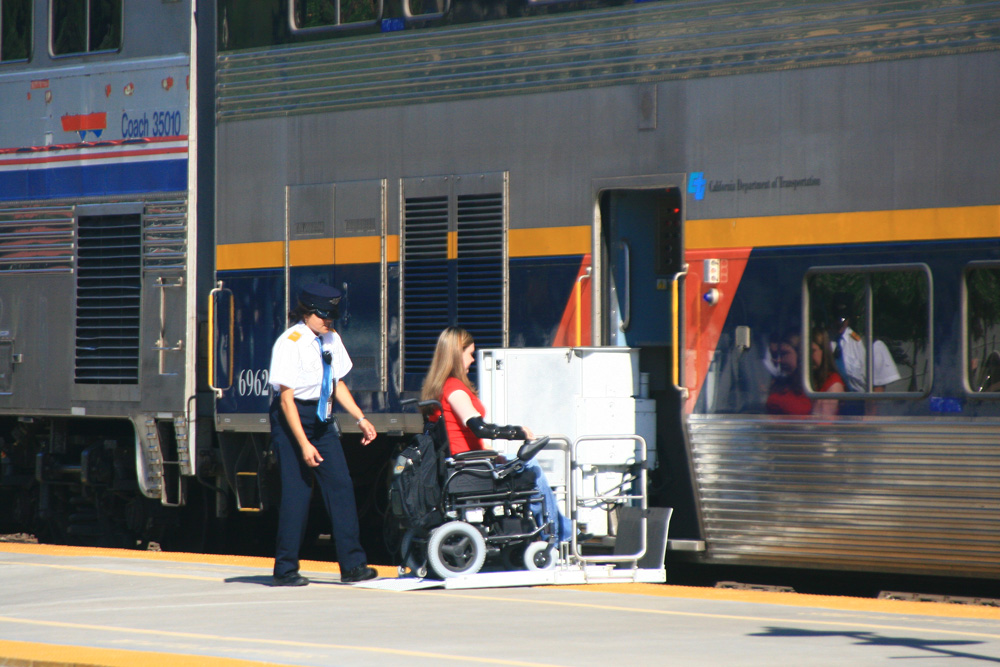
MIAMI — Brightline trains have hit and killed more than 180 people since the passenger service began operation in South Florida — a higher toll than had been publicly recognized, the Miami Herald and public broadcaster WLRN report in a joint investigation that also looks at causes of the deaths and a lack of safeguards to prevent them.
Journalists from the two entities examined federal data and local reports from medical examiners and police to reach the figure and say Brightline did not dispute it. The report says Brightline did not urgently address the problem — a view the company disputes, with vice president of operations Michael Lefevre saying in a statement that more than half are confirmed or suspected suicides, and that all have been the result of “illegal, deliberate and oftentimes reckless behavior by people putting themselves in harm’s way.”
The news report says there have been 182 deaths. Of those, 91 have been ruled as accidental, while the cause of 16 is either undetermined or is awaiting a ruling. Pedestrians or bicyclists accounted for 158 of the deaths; another 99 people were injured, while trains have hit cars at least 101 times when no injuries resulted.
The Herald/WLRN report also notes that a number of planned safety measures have not been installed because of lengthy delays in the release of federal funding.
The full report is available here; WLRN is also producing a podcast series on the investigation.














The local government body is solely responsible for crossing safety. Railroads contribute and cooperate because it is in their public interest to do so.
In defense of Brightline, they did (and continue to do) extensive regional advertising. They have hosted and cooperated with all the local government bodies to make sure there is adequate safety. In fact in one jurisdiction, who was wholly hostile to them, Brightline actually helped pay for the crossing upgrades when the public was hostile to spending *anything*. The county had to go get money from FDOT to make up the rest.
But lets be clear, there is no double gate, loud horn or flashing lights that will stop a suicide or a gate runner. For crying out loud, a fire truck tried to bypass a gate recently. The pedestrians who were found to be wearing earbuds when they were struck walking across a crossing as the lights flashed, shall we go back to the old school way of placing a human crossing guard who can stick their arm out and say “no” when the person involved appears to be blocking out personal responsibility? This is stuff from elementary school, people.
A high speed crossing in Illinois had such a high accident rate because people kept driving around or trying to beat the train. IDOT spent $3 million to build a robust chain based barrier system. This was after they had already spent several hundreds of thousands of dollars on double gating, flashing strobes, rising bollards in center lanes…..people kept trying.
I think it is irrational to spend $3 million per crossing to overcome the irrational behavior of trying to beat a crossing signal.
The French TGV spent millions of francs to keep animals and suicides off the high speed rail. It worked on the animals, but not the suicides, they simply shifted their efforts to the bridges and jumped off from there until they to were changed.
When someone wants to die of their own account, they usually will find the most efficient way to do so,even if they don’t have the means. That is a public health issue, not so much a railroad operations issue.
They spelled trespassers wrong.
People will be people no matter what obstacle you put in there way. When people jump of a bridge, the local, state or federal governments aren’t to blame. Railroads are not a place to gamble, yet people to it every day and most become losers. It is better to be late than never make it to your destination. Not to mention the train employees that experience so a thing.
1. I have not seen a single fatality attributed to a crossing gate failure, or lack of a warning horn. 2. There is no question that the FEC main, with its numerous crossings at grade, is a dangerous place. 3. You can’t fix stupid (someone else said that first) or a lack of situational awareness, or determination. 4. Of course I know that loss of life, for any reason, is awful.
Having read the article, it sounds to me that local governments also deserve blame.
It still comes down to people for what ever reason aren’t paying attention, in too much of a hurry, or making the decision to end their life.
Quad gates and some more fencing (until people start cutting the fencing) will help but still can’t prevent the lack of common sense or stop someone who deliberately wants to end their life.
I’m a huge rail passenger advocate. But running higher speed trains without the ROW being completely fenced off and quad gates at every grade crossing is inexcusable.
On the one hand, as a rail advocates, we can tell each other, in our rail advocate echo chamber, that Brightline’s death toll is Zero. On the other hand, Patrick has a point.
So it’s all the railroads fault. Nothing to do at all with poor decisions and lack of common sense and just outright stupidity.